Posts by admin
20 Great Gift Ideas for the Aspiring Travel Writer
Becoming a successful travel writer requires spending a lot of time on the road, often with little time for preparation. And of course it goes without saying that you’ll be moving light and fast, so checking a bag is out, and you’ll need every item of gear to be supremely useful, unquestionably reliable, and stylish enough that you won’t be embarrassed when you land that coveted interview with the foreign minister.
Through thousands of miles living, working and writing on the road, this is the gear that our travel writers have found to be the absolute must-haves. Any one would make a great Christmas gift for an aspiring travel writer, or a frequent traveler of the business or leisure variety.
 Kindle Fire HD
Kindle Fire HD
This piece of kit hardly needs an intro. At first, I just kept novels on my Kindle to browse on boring journeys. Now I get all my travel guides loaded up on here before I set off – much lighter than carrying around loads of books and easily searchable, too. I even put PDFs of my draft articles on here to read through, edit and show to others. I’ve got the keyboard version, which although slightly bigger, is much handier for adding notes to your literature – good for quick reference when you’re in the back of a tuktuk trying to figure out where you’re supposed to be going!
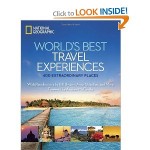 Worlds’ Best Travel Experiences: 400 Extraordinary Places
Worlds’ Best Travel Experiences: 400 Extraordinary Places
Even travel writers need inspiration sometimes, and National Geographic has always delivered on that promise for me. This brand new, beautifully-produced book makes a great gift for anyone who loves to travel. The full-color photos on nearly every page will have you drooling over far-off landscapes so gorgeous you’ll sometimes ask yourself if such places really exist. Meanwhile, short vignettes by some of the best travel writers in the world, including Pico Iyer, Bill Bryson, and Gore Vidal, will keep you smiling.
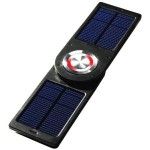 Freeloader Pro Solar Charger
Freeloader Pro Solar Charger
This is another little gadget that I don’t use regularly, but it did come in pretty useful when I was driving and camping around New Zealand. Trying as I was to avoid pricey campsites with such luxury facilities as power sockets, this little beauty helped me keep my phone and camera charged each day by collecting the sun’s rays through the windscreen as I drove along.
 Apple 11-inch MacBook Air
Apple 11-inch MacBook Air
For me, a great laptop is all about battery life. After I’ve watched a film on a long bus journey and uploaded the day’s photos, I still want to be able to write notes from the day and edit my blog. For days at a time in South America, I was racing through Bolivia to Brazil and taking buses instead of staying in hostels for the night. Few would argue that Apple products offer the best battery life and my beloved MacBook Air consistently delivers the promised 5 to 6 hours between charges – a boredom fighter and fantastic work aid.
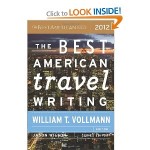 The Best American Travel Writing
The Best American Travel Writing
For travel writers, each year’s edition of The Best American Travel Writing is kind of like the Oscars for travel writers. It’s a glimpse at the state of the art in travel writing, an opportunity to inspire, learn, laugh, and be humbled. It’s also just pretty darn good writing. The perfect gift for anyone who has ever turned down a sketchy-looking alleyway in a foreign country because, well, it was a sketchy-looking alleyway in a foreign country.
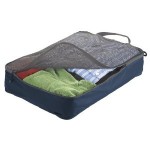 SeatoSummit garment bag
SeatoSummit garment bag
I only pack one backpack when I travel, which means my hiking boots, emergency snacks, and underwear float around in one big compartment. Not cool. SeatoSummit garment bags changed all that. I tried them out on a trip to Portland and was able to keep my clothing clean, folded, organized, and away from my dirty shoes and clementine oranges.
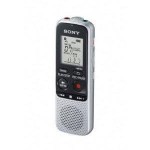 Sony ICD-BX112 Digital Voice Recorder
Sony ICD-BX112 Digital Voice Recorder
I adore this piece of kit. When you’re horse riding through the fields of Uruguay, or atop a camel in the African desert, a million thoughts are racing through your head and you can’t put them on paper until the experience is over. I like to clip this onto my shirt and describe what I see and how I feel so that later I can listen to the recording and jot down notes.
 Moleskine Notebook
Moleskine Notebook
I’m an old-fashioned girl at heart, and there’s something romantic about jotting down notes on the crisp pages of a Moleskine that makes me feel forever on the trail of Hemingway. Plus, the smart black leather cover also does well at reminding me to get on with work rather than play!
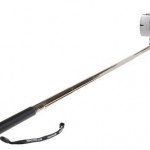 Xshot Extender 2.0
Xshot Extender 2.0
I lugged a tripod around India with me for two months before handing it over to another friendly traveler in a hostel. I simply didn’t use it and although it folded up pretty small, when I’m out exploring for the day, it’s just another piece of kit in my day bag. However, my boyfriend found this neat camera extender with which you can you can take great snaps of yourself without the need to fiddle around with timers or find a suitable ledge to rest your camera on. We got some great pictures of us nicely framed in front of famous sights such as the Angkor Wat temples. And at half a kilo it won’t weigh you down.
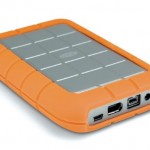 LaCie Rugged 500GB All-Terrain Hard Disk
LaCie Rugged 500GB All-Terrain Hard Disk
The three golden rules of travel writing? Back up, back up, back up. I’ve lost work before and nothing feels worse. You’ll need to keep all your documents saved in more than one place, especially if you’re carrying around a laptop or netbook desirable to thieves. I’ve been using this LaCie external hard drive for the last couple of years, keeping it separate from my laptop at all times to minimise the chances of losing all my work in one fell swoop. This model is fantastically practical thanks to its thick rubber edging, and can even survive a drop down a canyon (it was a small canyon, but a canyon nonetheless!) – so there’s no doubt it’ll withstand the beating that it suffers in my backpack.
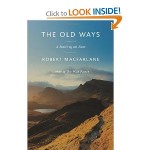 The Old Ways: A Journey on Foot
The Old Ways: A Journey on Foot
The numerous fans of The Wild Places and Mountains of the Mind will be thrilled to learn that Robert McFarlane has a new book out, and like its predecessors, The Old Ways is wowing critics and readers alike with McFarlane’s unique and genre-defying storytelling. Who ever said that travel writing had to read like, well, most travel writing? MacFarlane shows that subject matter should not be a hindrance to achieving literary genius.
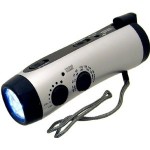 Kaito Hand Crank LED Flashlight
Kaito Hand Crank LED Flashlight
When I’m camping out in the woods or spending the night in a town without electricity, this little flashlight casts the perfect amount of light to write notes by at night. I’m now on my second one, having left the first one with a family in the mountains of Northern Laos. Once I realised they had to do a day’s walk to the nearest town to buy batteries, I understood why they found this gadget so magical.
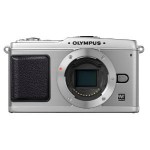 Digital Camera: Olympus PEN E-P1
Digital Camera: Olympus PEN E-P1
What makes the Olympus PEN E-P1 camera the best bet for travel writers is that the camera body is lightweight and discreet, but still takes beautiful photos. The extended battery life allowed me to shoot hours of HD video and hundreds of still shots in Belize’s Mayan villages with zero access to electricity.
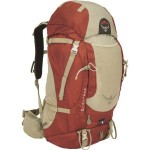 Backpack: Osprey Kestrel
Backpack: Osprey Kestrel
Osprey bags are well known for their durability, which was extra important when I had to carry my entire life on my back while I travelled throughout Belize for three months. Rips, tears, or broken zippers weren’t an option – and they weren’t an issue.
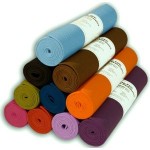 Yoga Mat
Yoga Mat
A yoga mat is my one essential non-essential when I travel. I’ve used it as a makeshift bed in Paraguay and for actual downward dog stretching in Cabo, San Francisco, and Belize. To transport the mat most effectively, I roll it very tight, secure the top with a rubber band, and insert the bottom into the exterior pocket of my backpack designed for a water bottle.
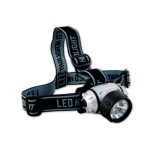 Headlamp
Headlamp
Headlamps are the ultimate hands-free device. In Paraguay, I used my headlamp every night on my way to the dark latrine. In Belize, I put it to good use exploring wet and dry caves. And I can’t forget all those nights it illuminated my travel journal as I wrote down my latest stories.
Read More
How I Broke Into Freelance Travel Writing
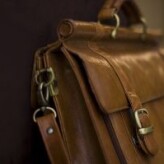
Breaking into freelance travel writing is not so different from breaking into other types of journalism. Start with small jobs, such as articles for your local newspaper, and gradually work your way up. As your portfolio builds, you can attach clippings of your past work to the pitches you make to editors. Markets that pay a dollar a word can offer a steady living as you get involved with press and media trips that take you across the world. As your list of clients grows, you can bolster your career by starting a blog and pitching book ideas to publishers such as Lonely Planet or Rough Guides. Finally, you become a Harvard professor and retire comfortably, living out the rest of your days sipping martinis on a private beach. Right?
While I’m not exactly qualified to cover the last two steps, I do make a comfortable living from freelance travel writing and can offer some sound advice for beginners. For starters, you need to learn how to tell a story and develop your own voice as a writer. Without a doubt, the best way to do this is to write stories about where you live. While this is much more exciting if you live in, say, San Francisco and not Chandler, Arizona, writing about the places you know offers a variety of perks. For one thing, you already know a bit of the history and culture and, if you’re lucky, you may know people who can give you an inside perspective on local events.
I got my start in travel writing by showcasing local theatres, restaurants, museums and hiking trails for newspapers in Asheville, North Carolina. While the pay wasn’t great, it got me thinking about how to describe places to my reader in an inventive way. It also gave me permission to be a tourist in my own home: asking questions about the architecture or noticing trends in cuisine and fashion that I normally wouldn’t. Even if my home town wasn’t such a mecca for artists and outdoor enthusiasts, I still would have managed to dig up hundreds of story ideas. It’s easy to forget that even in such glamorous destinations as Paris or Buenos Aires, there are still regular people living regular lives. While a local landmark or hiking trail may not be news to you, it still counts as a tourist destination for outsiders.
After publishing a few articles in the local paper, I began seeking out better-paying markets that specialize in travel. Thanks to the global recession and upward trends in internet publishing, many print markets have been driven out of business. Unfortunately, that includes thousands of regional magazines and newspapers that travel writers used to could count on for their income. Luckily, I caught this trend early and began to research magazines that had both an online and offline presence. The best of these include AFAR, American Way, BETA Magazine, and Backpacker, all of which pay up to a dollar a word.
Despite the steady rise in work, I began to feel as if I’d reached a plateau. Many of my editors wanted real-life experience in international destinations, and I had never left the country. Gradually I began to formulate plans for a three-month backpacking trip in Europe that included jaunts through Ireland, France, Italy and multitude of other countries. Since I wanted absolute freedom in my itinerary, I decided to save money on my own and shunned opportunities for media trips and tourism assignments that might have shouldered some of the cost. Until this point, it was still questionable whether or not I was a masochist. By now, the debate was settled. Needless to say, saving five thousand dollars on a beginner’s freelancing income was a miraculous feat, survived only with the help of bulk supplies of Ramen noodles.
Nevertheless, I saved the money and took out a credit card, and in early 2009 stepped aboard a plane to Ireland. I had pitched a few potential stories to editors, but my most important decision was starting a blog for daily travel updates. I can’t stress this enough for up-and-coming travel writers. Thanks to social networking sites such as Facebook and Twitter, travel bloggers can reach a wide audience of subscribers and keep them hooked. Some advice I wish I’d received early on was to think of my blog as a novel-in-progress. That means finishing each
entry with tomorrow’s itinerary, a question, or a tantalizing quote that keeps your readers coming back. This works the same way as cliff-hanger chapter endings in a novel, and your readers will faithfully clamor to read each day’s update.
Use your blog to help keep notes of descriptions and other details that you’ll want to remember when you’re writing later on, and always add images to complement your story. After learning these techniques and others, it wasn’t long before I developed an audience that couldn’t wait to hear what happened next in my journey. Later, when it came time to write a book, I used my blog entries to form the outlines and began condensing the different posts into chapters. I considered this a win-win situation: while I got to keep notes, garner exposure, and build a loyal following, my readers got to live vicariously through my experience. This is the key function of the travel writer. You are not only a storyteller, but a conveyor of excitements; boldly plundering each experience and passing it on to your reader in an effort to introduce them to the world outside their lives.
After three and a half months I returned to the States and got to work publishing articles for different markets. I used resources such as the Writer’s Market books and Craig’s List forums to find private clients, and began writing for online publishers such as Trails Travel, Golf Link, USAToday, and The Washington Times Communities. Thanks to some personal networking, I also began editing for travel publications such as Adventure Traveler Online, all while maintaining a healthy schedule of traveling and writing.
Before trying to break into freelance travel writing, it’s best to ask if the travel writer’s life is right for you. Do you love having freedom over your work schedule? Do you love visiting new places, and finding new ways to tell old stories? Do you feel a certain bravado about watching your day unfold on your own terms? If so, then it might be worth your time to take a stab at travel writing.
Read MoreWhat I Love About Being a Freelance Travel Writer
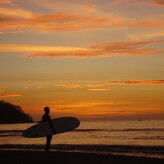
Like other freelance writers, I’ve always felt a slight feeling of nausea at the thought of working a nine-to-five job. Every day I wake up and go to my desk knowing that my creativity and articulation are the only things paying the bills. Although it can be a little frightening – especially during tax time – I find it exhilarating to watch the day unfold on my own terms. If a story isn’t making sense on paper, I just go for a hike or take a stroll to a local café and try again. If, at three AM, I get a great idea for a story, I send a quick e-mail to an editor and wake up the next morning to a brand new assignment.
Perhaps the biggest perk of being a travel writer is the license for guilt-free adventure. Whether it’s dancing with a local señorita or performing “detective work” at a neighborhood pub, being a travel writer gives you permission to experience each destination to its fullest. Contrary to popular belief, readers can sense when a writer is padding a story or using fluff clichés. I’ve heard more than one editor remark about tossing stories in the waste bin as soon as they see stock phrases such as “quaint”, “nestled”, or “resembling cardboard cutouts”. In other words: you have to truly experience the place you’re writing about if you want to write a good story.
As a freelance travel writer, your job is to find new places and tell new stories in a way that stains the reader’s imagination and makes them long to go where you’ve gone. I love this. It’s why I get out of bed in the morning. And because it’s nearly impossible to write an accurate, engaging story without experience, it forces me to get my head out of the guidebook and pay attention.
Which brings me to another reason why I love freelance travel writing. More than any other type of journalism, travel writing actually requires you to have a good time. I once tried to write a story about a weekend trip I spent in Dublin on the way to a writer’s conference. Due to logistical issues, I found myself constantly on the phone with conference staff and had no time for exploring the city. I was so preoccupied that I barely had a sip of Guinness in the airport before boarding my flight to Mali. Later, when I tried to write about my trip to Dublin, all I could summon were descriptions on how dreary the rain was.
One of my favorite trends in travel journalism is the recent boom in “experience tourism”. More and more readers are wanting stories about places that engage them both physically and mentally, with activities like ecotourism, volunteer work, and immersion. Instead of playing the role of tourist bystander, modern travelers are yearning to become important to the places they go. For me, this means even more opportunities to break the surface and connect with different people and their cultures. My favorite example of this is a week I spent volunteering at a work camp in Aix-en-Provence, France, that involved piecing together old Roman walls that had been buried for five centuries. After a day’s work everyone would reconvene on the patio for a bottle of du vin rouge while sharing our stories around a small fire pit. In addition to learning hands-on skills in masonry and excavation, my French vocabulary doubled, and I made some lasting friendships with the locals and other volunteers.
Thanks to conferences such as the annual New York Times Travel Show, travel writers can now talk directly with representatives of the tourism boards for different countries. Since practically every country profits from tourism, most travel shows have representatives just waiting to accommodate writers who can tell their story. One of my favorite aspects of travel writing is taking assignments from developing countries located in Africa, South America, Asia, or Eastern Europe. Since most readers are unfamiliar with these countries, you start to feel like you’re in unchartered territory. Why?
Because every travel writer and their cousin has written some blurb about cafés in Paris or coffeehouses in Amsterdam. But I don’t know anyone who’s written about, say, competing in an axe-throwing tournament in the Scottish Highlands, or witnessing a 2,000-year old shamanic ritual on an island in Lake Baikal, Russia. As a travel writer, you get paid to find that unique place or story and fully experience it with all your body.
And then comes the writing. With all of the allure and adventure of the job, it’s easy to forget that travel is only half of the job title. Being a travel writer means spending hundreds of hours crafting paragraphs and searching for the right words. It means sitting at your desk and revising stacks of pages for synapse and imagery, trying to find the best way to tell your stories. Fortunately, most successful travel writers have a passion for writing, and tend to find the act of filling pages to be as exhilarating as the traveling itself.
Of all the perks of the travel writer’s life, the writing is undoubtedly my favorite. It makes you see places and people in a different light, and keeps you searching for new ways to express yourself. As Natalie Goldberg famously said, writers live twice: experiencing each place one time in the flesh and another time on paper. I can’t imagine a better way to live.

